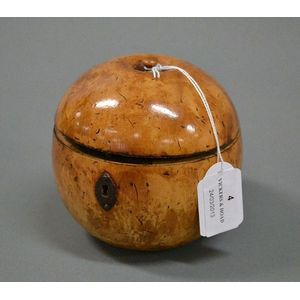French Footstools with Cane Work - Collection of Handburys
You must be a subscriber, and be logged in to view price and dealer details.
Subscribe Now to view actual auction price for this item
When you subscribe, you have the option of setting the currency in which to display prices to $Au, $US, $NZ or Stg.
- Provenance - A term used to describe the provable history of an antique or work of art, and thus an additional aid to verifying its authenticity. Provenance can have an inflating effect on the price of an item, particularly if the provenance relates to the early settlement of Australia, a famous person, or royalty. Less significant are previous sales of the item through an auction house or dealer.
- Oak - Native to Europe and England, oak has been used for joinery, furniture and building since the beginning of the medieval civilisation. It is a pale yellow in colour when freshly cut and darkens with age to a mid brown colour.
Oak as a furniture timber was superceded by walnut in the 17th century, and in the 18th century by mahogany,
Semi-fossilised bog oak is black in colour, and is found in peat bogs where the trees have fallen and been preserved from decay by the bog. It is used for jewellery and small carved trinkets.
Pollard oak is taken from an oak that has been regularly pollarded, that is the upper branches have been removed at the top of the trunk, result that new branches would appear, and over time the top would become ball-like. . When harvested and sawn, the timber displays a continuous surface of knotty circles. The timber was scarce and expensive and was used in more expensive pieces of furniture in the Regency and Victorian periods. - Cane in Furniture Making - Cane, as used to make furniture is harvested from the ratan palm. The rattan palm is a type of climbing palm that is native to tropical regions of Asia and Africa. The stem of the rattan palm, also known as cane, is harvested, stripped of its skin, and then used to make a variety of furniture items. Rattan furniture is known for its durability, lightness and natural beauty. The cane is flexible yet strong and can be woven into various patterns, making it suitable for a wide range of furniture styles from traditional to modern. The furniture made from rattan cane is also known for its durability and resistance to extreme weather conditions. Popular items include chairs, tables, sofas, and cabinets. The natural colour of the cane can be preserved or it can be stained or painted for different looks.
This item has been included into following indexes:
Visually similar items

Royal Doulton figure Daydreams HN1731

Treen apple-shaped tea caddy, 11 cm high

Len Castle, stoneware dish, the interior with a blue hare-fur glaze with tenmoku glaze to the exterior, impressed initials. 37 x 30 cm

One volume, John Allcot marine Artist Copperfield Publishing Pty Ltd, Sydney, NSW in 1978, 1978. Fully bound in rich blue morocco, gold blocked with raised bands on spine. Contains 34 full colour tipped in plates of famous ships such as Roebuck, Endeavour,
